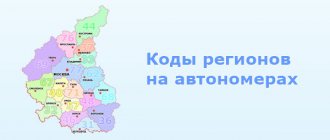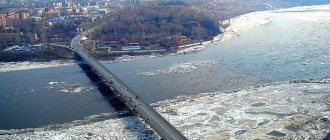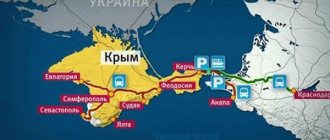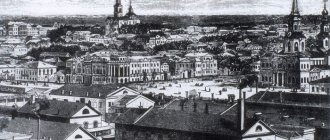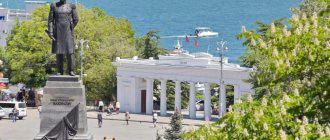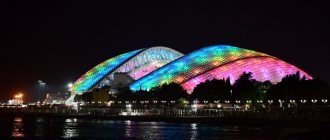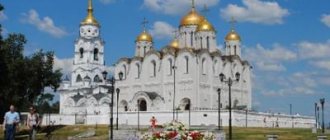Holiday calendar, signs, dates and events for every day of the year - folk calendar, Orthodox calendar, church calendar, eastern calendar, astrological calendar, lunar calendar, industrial calendar, as well as state and professional holidays, including significant World and International holidays and public holidays , folk holidays and omens, and other equally interesting and unusual holidays, dates and events of the year, zodiac signs, dream books and much more.
Calendar for 2022
| January | ||||||
| Mon | W | Wed | Thu | Fri | Sat | Sun |
| February | ||||||
| Mon | W | Wed | Thu | Fri | Sat | Sun |
| March | ||||||
| Mon | W | Wed | Thu | Fri | Sat | Sun |
| April | ||||||
| Mon | W | Wed | Thu | Fri | Sat | Sun |
| May | ||||||
| Mon | W | Wed | Thu | Fri | Sat | Sun |
| 1 | ||||||
| 2 | 3 | 4 | 5 | 6 | 7 | 8 |
| 9 | 10 | 11 | 12 | 13 | 14 | 15 |
| 16 | 17 | 18 | 19 | 20 | 21 | 22 |
| 23 | 24 | 25 | 26 | 27 | 28 | 29 |
| 30 | 31 | |||||
| June | ||||||
| Mon | W | Wed | Thu | Fri | Sat | Sun |
| 1 | 2 | 3 | 4 | 5 | ||
| 6 | 7 | 8 | 9 | 10 | 11 | 12 |
| 13 | 14 | 15 | 16 | 17 | 18 | 19 |
| 20 | 21 | 22 | 23 | 24 | 25 | 26 |
| 27 | 28 | 29 | 30 | |||
| July | ||||||
| Mon | W | Wed | Thu | Fri | Sat | Sun |
| 1 | 2 | 3 | ||||
| 4 | 5 | 6 | 7 | 8 | 9 | 10 |
| 11 | 12 | 13 | 14 | 15 | 16 | 17 |
| 18 | 19 | 20 | 21 | 22 | 23 | 24 |
| 25 | 26 | 27 | 28 | 29 | 30 | 31 |
| August | ||||||
| Mon | W | Wed | Thu | Fri | Sat | Sun |
| 1 | 2 | 3 | 4 | 5 | 6 | 7 |
| 8 | 9 | 10 | 11 | 12 | 13 | 14 |
| 15 | 16 | 17 | 18 | 19 | 20 | 21 |
| 22 | 23 | 24 | 25 | 26 | 27 | 28 |
| 29 | 30 | 31 | ||||
| September | ||||||
| Mon | W | Wed | Thu | Fri | Sat | Sun |
| 1 | 2 | 3 | 4 | |||
| 5 | 6 | 7 | 8 | 9 | 10 | 11 |
| 12 | 13 | 14 | 15 | 16 | 17 | 18 |
| 19 | 20 | 21 | 22 | 23 | 24 | 25 |
| 26 | 27 | 28 | 29 | 30 | ||
| October | ||||||
| Mon | W | Wed | Thu | Fri | Sat | Sun |
| 1 | 2 | |||||
| 3 | 4 | 5 | 6 | 7 | 8 | 9 |
| 10 | 11 | 12 | 13 | 14 | 15 | 16 |
| 17 | 18 | 19 | 20 | 21 | 22 | 23 |
| 24 | 25 | 26 | 27 | 28 | 29 | 30 |
| 31 | ||||||
| November | ||||||
| Mon | W | Wed | Thu | Fri | Sat | Sun |
| 1 | 2 | 3 | 4 | 5 | 6 | |
| 7 | 8 | 9 | 10 | 11 | 12 | 13 |
| 14 | 15 | 16 | 17 | 18 | 19 | 20 |
| 21 | 22 | 23 | 24 | 25 | 26 | 27 |
| 28 | 29 | 30 | ||||
| December | ||||||
| Mon | W | Wed | Thu | Fri | Sat | Sun |
| 1 | 2 | 3 | 4 | |||
| 5 | 6 | 7 | 8 | 9 | 10 | 11 |
| 12 | 13 | 14 | 15 | 16 | 17 | 18 |
| 19 | 20 | 21 | 22 | 23 | 24 | 25 |
| 26 | 27 | 28 | 29 | 30 | ||
Designations in the calendar: X - holidays; X—weekends; X - reduced working day by 1 hour;
City of Saint Petersburg
- Detailed history of St. Petersburg
The once Novgorod lands in the delta of the Neva River (known as the Izhora land since the 13th century) were ceded to Sweden under the peace treaty of 1617.
One of the main goals of the Northern War was to return them and strengthen Russia’s position in the Baltic Sea. On the territory occupied by modern St. Petersburg, until the 18th century there were many settlements: Avtovo, Kupchino, Strelna, the Nyenschanz fortress and others.
The city of St. Petersburg was founded on May 16 (27), 1703 by Peter I. On this day, Tsar Peter I founded the wooden Church of Peter and Paul, the future Peter and Paul Fortress, on Hare Island at the confluence of the largest branches of the river delta - the Neva and Bolshaya Nevka.
In 1704, the Kronstadt fortress was founded on the island of Kotlin in the Gulf of Finland. On November 5, 1705, the Admiralty was founded, and already in 1706, two 18-gun jets and the yacht “Nadezhda” were launched on it.
Construction work in the city was led by the first Governor-General of St. Petersburg A.D. Menshikov; in 1706, the Office of City Affairs was established to organize construction affairs. In 1709, in honor of the victory of the Russian army in the Battle of Poltava, the first linear 54-gun ship, Poltava, was laid down at the Admiralty.
In 1710, the Church of Isaac of Dalmatia was founded, in the place where, according to legend, Prince Alexander Nevsky defeated the Swedes in 1240, the Alexander Nevsky Lavra was founded, which in 1711 was connected to the Admiralty by a clearing - the “Bolshaya Perspektiva”, the future Nevsky Prospekt. In 1712, in the Peter and Paul Fortress, according to the design of the architect Domenico Trezzini, construction of a stone cathedral began on the site of a wooden church.
In 1712, the royal court moved from Moscow to St. Petersburg, followed by the Senate in 1713. In 1714, the country royal residence of Peterhof was founded, the first fountains and the Monplaisir Palace were built.
In 1714-1715, construction began on the Vyborg side, Vasilievsky Island, Peterhof, Yekateringof, Oranienbaum. In 1715, the Maritime Academy was founded in St. Petersburg, and in the same year a decree was issued to pave the city streets. In 1716, the first St. Petersburg theater was opened - the theater of Princess Natalya Alekseevna. In 1719, in the building of the “Chambers of the St. Petersburg Academy of Sciences, Library and Kunstkamera” the Kunstkamera was opened - the first public museum in Russia.
In 1722, the first coat of arms of St. Petersburg was approved, and construction of the building of the Twelve Colleges began.
In 1723, the fountains of the large cascade started working in Peterhof. In 1724, the St. Petersburg Academy of Sciences was founded. In 1725, the first water supply system began operating in the city. By the end of the twenties of the 18th century, many industrial enterprises appeared in the city: Smolny Dvor, Foundry Dvor, Sestroretsk Arms Factory, Mint, Shpalernaya Manufactory, Rope Dvor, Silk Manufactory and many other manufactories, factories and factories. In 1738, the streets of St. Petersburg received their first official names.
Starting from the middle of the 18th century, pragmatic construction was replaced by the construction of majestic buildings that created the unique metropolitan appearance of the city: the Winter, Stroganov, Vorontsov and Anichkov palaces, the Smolny and Vladimir cathedrals. In 1756, a public theater was founded, in 1757 - the Imperial Academy of Arts, designed by I. Shuvalov.
In 1758, the Tuchkov Bridge was built. In 1769, construction of the Obvodny Canal began. In 1780, construction began on the granite embankment of the Fontanka River.
By the highest order of Empress Catherine II on May 16 (27), 1795, the Imperial Public Library was founded. In 1819, according to the design of O. R. Montferrand, St. Isaac's Cathedral was founded.
On December 14, 1825, the day of the oath of allegiance to the new Emperor Nicholas I, the famous Decembrist uprising took place in St. Petersburg on Senate Square.
In 1833, there were 137 medium and large plants and factories operating in the city. In 1837, the first Russian railway was opened from St. Petersburg to Tsarskoe Selo (now the city of Pushkin). In 1847, public route carriages appeared, stagecoaches began to travel to the suburbs, and passenger steamers began to travel along the Neva. In 1851, the St. Petersburg–Moscow railway was opened. In 1862, there were 347 large enterprises in the city.
The urban population of St. Petersburg at the beginning of the twentieth century was about one and a half million people. Since the beginning of the 20th century, there have been 9 tram routes in the city, and the first city bus appeared in 1907.
On January 9 (22), 1905, imperial troops shot a peaceful demonstration led by priest G. Gapon, which became the beginning of the first Russian revolution.
In 1911, there were about 50 thousand telephone subscribers in St. Petersburg. In 1914, there were 35 higher educational institutions in the city.
On August 18 (31), 1914, St. Petersburg changed its name to Petrograd.
Since the autumn of 1916, food supplies in Petrograd began to dwindle. The city celebrated the New Year of 1917 with mass strikes; in January 1917, the total number of strikers reached 355 thousand people; in February, Petrograd was overwhelmed by mass unrest. All attempts by the commander of the capital's military district, General S. Khabalov, to restore order failed; military units en masse went over to the side of the rebels. The consequence of this was the abdication of Emperor Nicholas II from the throne, which took place on March 2, 1917.
On March 23, 1917, a funeral was held on the Champ de Mars for those killed during the February Revolution. On October 25 (November 7), 1917, Petrograd experienced another revolution, as a result of which power in Russia fell into the hands of the Bolsheviks.
In 1919, the Bolshoi Drama Theater (BDT) was opened. In 1923, a massive renaming of Petrograd streets took place. On January 26, 1924, Petrograd was renamed Leningrad. In 1926, regular bus service was organized along the streets of Leningrad.
On August 1, 1927, the city became the center of the newly formed Leningrad region. In 1929, the country's first sound cinema was opened at 72 Nevsky Prospekt. In December 1931, Leningrad was removed from the region and transformed into a city of republican subordination.
In 1932, the first Leningrad airport, Pulkovo, began operating. In 1936, the construction of the Volodarsky Bridge across the Neva, designed by engineer G.P. Perederia, was completed, and the first trolleybus route in the city was opened. In 1940, construction of the Leningrad Metro began.
During the Great Patriotic War, from September 8, 1941 to January 27, 1944, the city was blocked by German and Finnish troops. From the first months of the blockade in Leningrad, the food problem became acute and famine began. During the blockade, 1.3 million people were evacuated from the city, more than 650 thousand civilians died, of which only 3% became victims of bombing and shelling, the vast majority of Leningraders died of hunger. Only on January 18, 1943, the forces of the Leningrad and Volkhov fronts broke the blockade, which made it possible to improve the supply of residents and defenders of the city. In January 1944, the blockade was completely lifted. The unparalleled resilience of the townspeople, military personnel of the Leningrad Front and the Baltic Fleet saved the city from destruction and allowed the forces of the German Army Group North to be tied up for three years.
In 1948, the cruiser Aurora was permanently moored on the Bolshaya Neva as a monument. In 1955, the Leningrad Metro was opened.
In the 70-80s of the twentieth century, many large architectural structures were built in Leningrad, among them: the Oktyabrsky cinema and concert hall, the Yubileiny sports palace, the Moscow hotel, the Pulkovskaya hotel, the new Pulkovo air terminal (architect A.V. Zhuk) and the updated Pulkovo-2 airport.
Holiday calendar, dates and events for every day of the year
All state and professional holidays of Russia, including significant World and International holidays, and other equally interesting holidays, dates and events of the year... Holiday calendar for every day; Russian production calendar with holidays.
• What holiday is today and tomorrow, dates and events...
Economy and resources of the Northwestern Federal District
About half of the forest resources in the European part of the Russian Federation are concentrated on the territory of the Northwestern Federal District; for some regions, the timber processing industry is a key part of the economy (for example, Karelia). Also from minerals there are:
- Up to 19 percent of Russian diamond and nickel reserves;
- More than 70 percent of apatite reserves;
- Almost 78 percent of reserves are titanium;
- 20 percent mineral waters;
- 45 percent bauxite;
- Coal, oil and gas occupy an important place, but it is worth noting that production is carried out only in some regions. For example, 90% of the gas produced in the Northwestern Federal District is obtained from the Vuktylskoye field in the Komi Republic.
The industry of the Northwestern Federal District represents a very large number of sectors, from mechanical engineering and timber harvesting to fish farming and electric power. If you look at the general indicators of Russia, the Northwestern Federal District accounts for a little more than 6 percent of agriculture and 12 percent of industrial production. The district is Russia's leader in shipbuilding.
You can read more about the economy of the Northwestern Federal District in the regional sections; all the information is there, including statistical information.
Republic of Karelia
Church calendar for every day
The church calendar is a time counting system used by the Orthodox Church to determine the sequence of church holidays and fasts in the annual cycle, as well as the corresponding services. Also the name of printed publications of various types, containing (in addition to general calendar functionality) elements of the monthly calendar and other materials of a liturgical and menological nature adapted to a specific year. The Church calendar contains two annual circles of events... Church calendar
Climate and geography of the Northwestern Federal District
The Northwestern Federal District borders on seven countries: Finland, the Republic of Belarus, the Kingdom of Norway, Latvia, Estonia, Lithuania, as well as Poland. It also borders three federal districts: Ural, Central and Volga. It has access to four seas: the Baltic, Kara, Barents, and White.
The district has a very significant number of lakes and rivers (the Northwestern Federal District accounts for more than half of all fresh water reserves in the European part of the Russian Federation). It is also worth noting the largest lakes: Onega and Ladoga, which are the largest in Europe. The terrain is mostly flat; the highest point can be considered Mount Narodnaya, which is part of the Ural Mountains system and is located on the border of the Komi Republic and the Khanty-Mansi Autonomous Okrug (Ural Federal District). In second place are the Khibiny Mountains in the Murmansk region with the highest point of 1200 meters.
The climate in the northern regions of the Northwestern Federal District is subarctic, in the southern regions it is temperate. In almost all regions, high humidity can be noted; there is not too much precipitation (if you look at the average for the district), but due to high humidity, it does not evaporate well, which leads to the appearance of a large amount of marshy areas.
The climate of the Northwestern Federal District is strongly influenced by the Atlantic Ocean (where the largest number of cyclones come from), as well as the Arctic Ocean. In the northern regions of the Northwestern Federal District, summers are short but warm, and winters are harsh. In the northwest, summers are usually cool, but winters are quite warm.{ads1}
It is worth noting weather anomalies in the 21st century due to which the climate of the Northwestern Federal District periodically updates records. Winters have become warmer; there were cases when in the Leningrad region and South Karelia the first snow fell only in January, which was impossible back in the 90s. Obviously, the issue is not with global warming and other similar “reasons”, but with climate cycles. You can read more about the climate of each subject of the Northwestern Federal District in the section about a specific region.
Leningrad region, Vyborg.
Russian folk calendar for every day
Season: Winter - December, January, February.
Season: Spring - March, April, May.
Time of year: Summer - June, July, August.
Season: Autumn - September, October, November.
